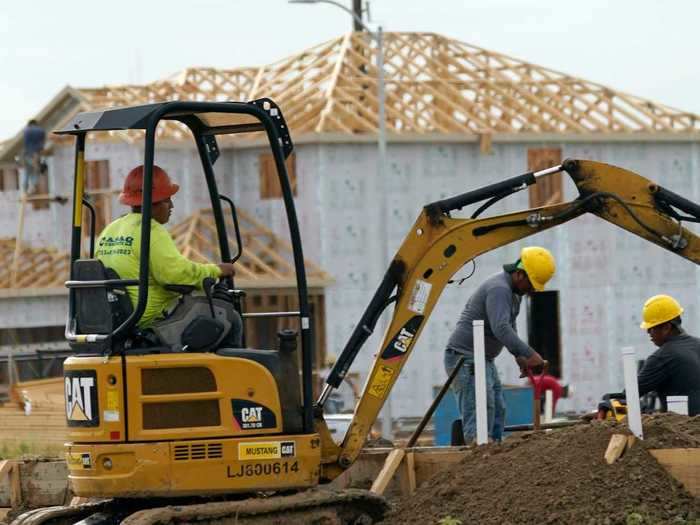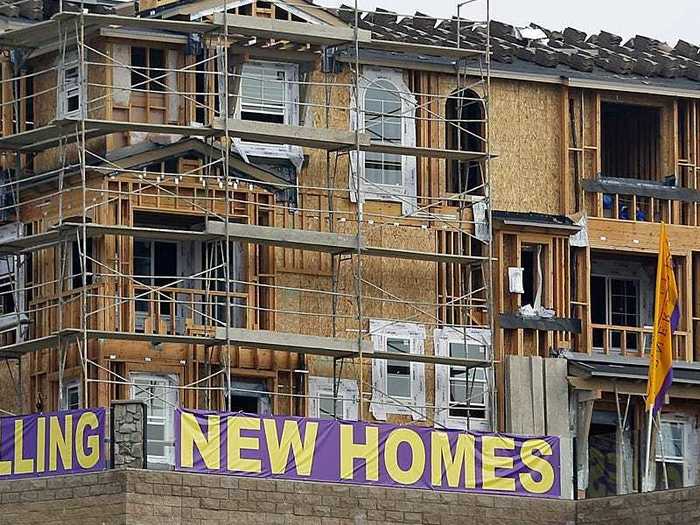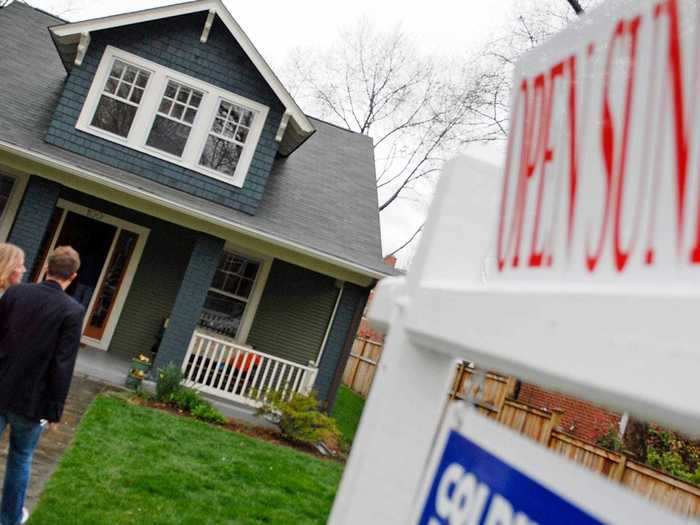Newsday LLC / Contributor/Getty Images
- The housing market is on fire, with a supply shortage driving prices to record highs.
- But alternative signals show the market isn't just tight, it's changing in much more fundamental ways.
- Here are the five structural shifts that are fueling the red-hot US housing market.
The housing market is on fire.
What began as a pickup in demand early in the pandemic has evolved into an all-out buying spree. Sales of new and previously owned homes, while off their peaks, remain elevated. Construction has picked up somewhat, but contractors are struggling to shore up supply. With inventory sitting near record lows, price growth has accelerated to rival the 2000s housing bubble.
Reports published Tuesday confirmed the boom is alive and well. Prices soared through March at the fastest rate since 2005, according to S&P CoreLogic. Separately, Census Bureau data showed new single-family home sales slowing 5.9% through April. Still, the sales pace sits well above the pre-pandemic norm.
But it's not just conventional gauges posting shocking superlatives - fundamental change is afoot in US housing. Alternative data, from lumber prices to the realtor-to-listing ratio, show a handful of structural shifts taking place throughout the market. Glenn Kelman, CEO of real-estate brokerage Redfin, unpacked several of them on a Twitter thread that racked up more than 14,000 likes in less than 48 hours.
Here are the five major changes reshaping the US housing sector.
1 - Buyers face a persistent shortage of available homes
A real estate sign is seen in front of a house for sale in West Los Angeles on November 20, 2020.
Chris Delmas/AFP/Getty Images
At its core, the market boom is simply a result of too few homes. Economists are largely confident that, while trends are similar to the mid-2000s bubble, it's a nationwide supply shortage driving prices higher, and not risky lending practices.
- More realtors than listings
The number of available homes in the US totaled 1.16 million at the end of April, according to the National Association of Realtors. NAR ended last month with 1.48 million members.
The association's membership has exceeded listings through much of the year as sales bite into home availability.
- Historically low inventory
The national supply of available homes in the US plummeted to record lows at the start of the pandemic and have only just risen from those levels through 2021. The monthly inventory rose to 4.4 months in April, but the bounce has as much to do with a slowing pace of sales as it does with a pickup in construction.
- Homes selling at a record pace
When homes are coming up for sale, they aren't staying on the market all that long. The average home now sells in a record-low 17 days, Kelman wrote on Twitter.
2 - People are fleeing cities for cheaper locales
BOSTON, MA - SEPTEMBER 1: Edward Cardona (left) and Cameron Secorsky take it carry a house plan on top of a couch as they move in Allston, Sept. 1, 2016. September 1st in Boston is also known as "September Worst" because of the chaos of moving, and "Allston Christmas" because of all the things that are left on the curb for the taking when people move in and out of apartments. (Photo by David L. Ryan/The Boston Globe via Getty Images)
David L. Ryan/The Boston Globe via Getty Images
The story of the 2020-2021 housing market is also one of migration. Americans largely fled densely populated cities for suburbs and traded their apartments for homes while mortgage rates were low. And after years of intense crowding in metropolitan areas, people seeking more space during the work-from-home period rushed to less populated states.
- Low-tax states seeing huge inflows
Attractive tax rates seemingly played a major role in the moving bonanza. Four people moved into low-tax states for every one that left, Kelman said. That ratio rose to 5:1 in Texas and 7:1 in Florida.
- Moving families face a new status quo
Americans who moved during the pandemic took a few risks. In a Redfin survey of 2,000 homebuyers, 63% said they bid on a home they hadn't seen in person yet.
Separately, those moving to low-tax states enjoyed far lower housing costs. In many instances, the money saved allowed one parent to stop working, and many buyers are retiring early, Kelman said in a Wednesday tweet.
- Inventory and prices up in SF and NYC
Still, some of the country's biggest cities aren't down for the count. Inventory has swung higher in New York City and San Francisco by 28% and 77%, respectively, according to Kelman. Yet prices are increasing steadily in both markets, suggesting that, while many are moving out, enough are moving in to support already lofty prices.
3 - It's getting more and more expensive to build homes
Construction workers build a new Centex home on Tuesday, June 23, 2020, in Houston.
David J. Phillip/AP
The simplest solution to slowing homes' rapid price growth would be to increase supply. Yet the combination of a historic surge in demand with supply-chain bottlenecks as the economy reopened have hindered contractors.
- Lumber prices exploded higher
Most recently, surging lumber costs cut into builders' efforts. Prices soared to record highs earlier in May and closed 280% higher year-over-year on Tuesday.
- Not enough building space
Even if lumber cost less, there's scant room to build homes. The New Home Lot Supply Index — which tracks lots ready for building — fell 10% to a record low in the first quarter, according to housing analytics firm Zonda.
Even the firms that have empty lots are running behind in converting them to sellable homes. About 242,000 authorized homes hadn't been started yet in April, the Census Bureau said last week. That's the highest level since 1979.
- Builders waiting for the opportune moment
The various shortages and bottlenecks have led builders to hit the brakes and wait for profitability to rebound. Nearly one-in-five contractors surveyed by the National Association of Realtors in April said they're delaying construction or sales.
About 47% said they added escalation clauses to contracts last month. The clauses allow contractors to lift homes' selling prices to offset an increase in building costs.
4 - Pricey construction, unrelenting demand is driving stronger home inflation
REUTERS/Mike Blake
With builders unable to meet demand with new supply, prices predictably shot through the roof. Experts see home-price inflation staying hot into 2023, and with selling prices already elevated, a long rally could further dent home affordability across the US.
While the rate of sales has cooled slightly, price growth remains strong. The median selling price of new homes rose to a record-high $372, 400 in April, the Census Bureau said Tuesday.
The median price for previously owned homes rose to a record of its own last month. The average existing home cost $341,000 in April, the National Association of Realtors said on May 21.
- Sell-over-ask at record highs
For those looking to sell, there's never been a better time. Homes are selling on average for 1.7% above their asking price, Kelman wrote on Twitter. That's the largest average overshoot on record.
5 - Americans increasingly prioritize value and space
REUTERS/Jonathan Ernst
Still, not all buyers are losing out as the market boom charges onward.
- Two-thirds of buyers say they snagged great deals
A Redfin survey of 600 homebuyers found that about two-thirds of people who moved during the pandemic bought a unit that was the same size or larger than their previous home. The same share of buyers spent the same or less on housing, the firm added.
- Most had more cash after they moved
Moving during the pandemic also tended not to break the bank. Of the Americans reporting they moved into larger homes, 78% said they have the same amount of disposable income or more after their move, Kelman said.
"Idaho home price could triple and still seem affordable to a Californian," the Redfin CEO said in a tweet.





